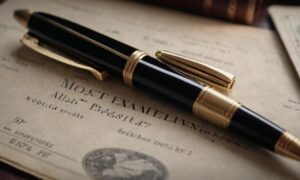Have you ever wanted to capture the sleek and powerful essence of a Boeing 737 on paper? Drawing an aircraft, especially one as iconic as the Boeing 737, can be a rewarding and enjoyable experience. In this guide, we’ll take you through the step-by-step process of creating your own impressive rendition of this popular commercial airplane.
Materials Needed
Before we delve into the drawing process, let’s gather the materials you’ll need to bring your Boeing 737 to life:
- Pencil
- Eraser
- Drawing paper
- Ruler
- Reference images of the Boeing 737
Step 1: Research and Reference
Begin by researching and collecting reference images of the Boeing 737. Pay attention to its distinct features, proportions, and angles. Having a clear understanding of the aircraft’s structure will greatly assist you in the drawing process.
Step 2: Basic Sketch
Start your drawing with a basic sketch. Use light, loose lines to outline the overall shape of the Boeing 737. Pay attention to the fuselage, wings, tail, and cockpit. This initial sketch will serve as the foundation for your detailed drawing.
Step 3: Define the Details
Once you’re satisfied with the basic sketch, begin adding details to your Boeing 737. Focus on the specific features that make this aircraft unique, such as the winglets, engines, and cockpit windows. Take your time to ensure accuracy in your depiction.
Step 4: Refine and Shade
Refine the outlines of your drawing, paying close attention to proportions and symmetry. As you progress, add shading to create depth and dimension. Use your reference images to guide you in highlighting areas where shadows fall and where light reflects on the surfaces of the aircraft.
Step 5: Final Touches
Give your drawing the final touches it deserves. Erase any unnecessary guidelines, refine details, and ensure that the proportions are accurate. Take a step back and admire your work, making any additional adjustments as needed.
Tips for Success
Here are some additional tips to enhance your drawing experience:
- Take breaks to avoid eye strain and maintain focus.
- Experiment with different shading techniques to achieve the desired effects.
- Don’t be afraid to make mistakes; they are a natural part of the learning process.
By following these steps and incorporating your own artistic flair, you’ll be able to create a stunning representation of the Boeing 737 that showcases your passion for aviation and art.
Choosing the Right Angle
When selecting reference images, consider exploring different angles of the Boeing 737. Experimenting with various perspectives will allow you to capture the dynamic nature of the aircraft. Choose an angle that highlights the features you find most intriguing or challenging to draw.
Utilizing Grid Lines
Enhance your accuracy in sketching by incorporating grid lines on your drawing paper. Divide the paper into a grid to create a proportional guide for placing key elements of the Boeing 737. This technique can be especially helpful in maintaining symmetry and proportion throughout your artwork.
Understanding Aerodynamics
Take a moment to familiarize yourself with basic aerodynamic principles as they apply to the Boeing 737. Understanding how air flows over the wings, fuselage, and tail can inform the way you depict these elements in your drawing. This knowledge adds a layer of authenticity to your artwork.
| Common Mistakes to Avoid | How to Correct Them |
|---|---|
| Disproportionate Elements | Regularly compare different parts of your drawing to ensure they are proportionate. Make adjustments as needed to maintain a balanced representation. |
| Overcomplicating Shadows | Simplify shading by identifying primary light sources. Focus on the interplay between light and shadow to convey the three-dimensional aspects of the Boeing 737. |
| Lack of Depth | Create depth by varying the intensity of your shading. Darken areas that are farther from the light source to add a realistic sense of depth to your drawing. |
Frequently Asked Questions
- Q: Can I use pen instead of a pencil for the initial sketch?
A: While pencil allows for easier corrections, you can use a pen if you’re confident in your sketching skills. Just be mindful of precision. - Q: How do I make my drawing more stylized?
A: Experiment with exaggerating certain features or playing with the proportions. Stylization adds a unique touch to your artwork. - Q: Are there specific paper types best suited for aircraft drawings?
A: A smooth, heavyweight paper is ideal for detailed drawings. It prevents smudging and provides a stable surface for your artwork.






